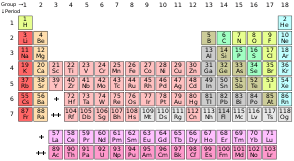Atomic Structure: Unlocking the Secrets of the Building Blocks of Matter
Welcome to our website, where we embark on an exciting journey into the intricate world of atomic structure. The study of atomic structure has revolutionized our understanding of matter and laid the foundation for advancements in various scientific disciplines. Join us as we explore the components and organization of atoms and unravel the secrets they hold.

- Protons: Protons are positively charged particles found in the nucleus of an atom. They contribute to the overall mass of the atom and determine its atomic number. The number of protons in an atom defines its identity as a specific element.
- Neutrons: Neutrons are uncharged particles also located in the nucleus of an atom. They add to the mass of the atom without affecting its charge. The number of neutrons can vary, giving rise to different isotopes of an element.
- Electrons: Electrons are negatively charged particles that orbit around the nucleus in energy levels or electron shells. They determine the chemical behavior of atoms and participate in chemical reactions. The arrangement of electrons in the electron shells follows specific patterns and rules.
- Atomic Nucleus: The atomic nucleus is the central core of an atom, comprising protons and neutrons. It contains nearly all of the atom’s mass and remains relatively stable. The positively charged protons in the nucleus are balanced by the negatively charged electrons in the electron shells, creating an overall neutral charge for the atom.
- Electron Shells: Electron shells, or energy levels, are regions surrounding the nucleus where electrons are found. The innermost shell is closest to the nucleus and can hold a maximum of two electrons. Subsequent shells have higher energy levels and can accommodate more electrons.
- Valence Electrons: Valence electrons are the electrons in the outermost energy level of an atom. They play a vital role in chemical bonding and determine the reactivity and chemical properties of an element. The number of valence electrons influences how an atom interacts with other atoms to form compounds.
- Quantum Mechanics: Quantum mechanics is the branch of physics that describes the behavior of atoms and subatomic particles. It provides a mathematical framework to understand the probabilities and uncertainties associated with the precise location and energy of electrons in an atom.
By studying the structure of atoms, scientists have unlocked numerous applications in fields such as chemistry, physics, materials science, and more. Understanding atomic structure enables us to manipulate matter at its fundamental level and develop new technologies and innovations.
At our website, we delve into the intricacies of atomic structure and its implications across various scientific disciplines. Join us as we explore the components, organization, and behavior of atoms, uncovering the secrets of the building blocks of matter. Welcome to a place where atomic structure unlocks a world of possibilities and fuels our curiosity and thirst for knowledge.

